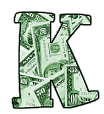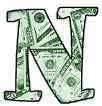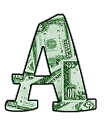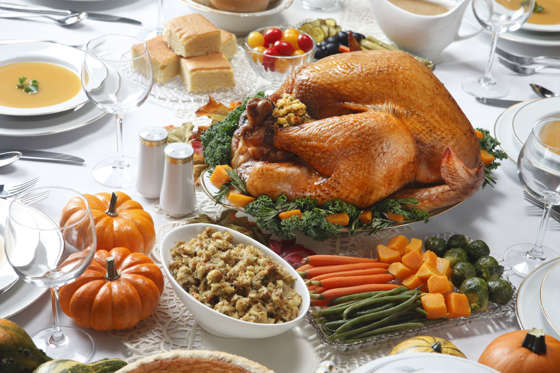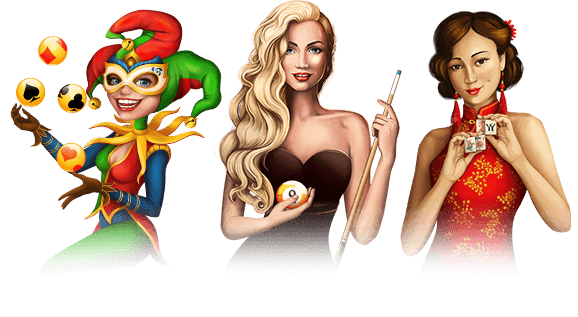

Thanksgiving Didn't Originate in America
When the Pilgrims first settled in America in 1620, it was actually pretty common back home
in Europe to gather together in large groups for a meal and give thanks to God,
according to Thanksgiving research from Mental Floss. And with so much
to give thanks for in those early days—from a good crop coming
in to a drought ending—it's unlikely that the 1621 celebration we all cite as the
"First Thanksgiving" was truly the very first one.
In fact, it was common for an entire day of thanksgiving to be declared on the very date
a ship would first land in new territory. The history books cite lots of previous examples of this,
including those who came over on a ship called the Margaret in 1619 and another group of Spanish
explorers back in 1565. So why do we refer to the 1621 feast as the "First Thanksgiving"?
It's probably all due to a woman named Sarah Josepha Hale. (But more on that later.)
Thanksgiving Was Never Tied to Religion
Though it's commonly believed that the first Thanksgiving was rooted in religion
(being that they were giving thanks to God for their good fortune),
it really wasn't actually a religious event. If it had been,
the Native Americans wouldn't have been there, and the day would have been less
about feasting on food and more about praying.
"Traditional" Thanksgiving Foods Weren't Served
If you think the Pilgrims were asking their new Native friends to please pass the stuffing,
you might want to think again. In fact, most of the foods we now consider to be
Thanksgiving classics weren't even around back then. Those at the feast did enjoy things
like goose, duck, seafood, nuts, corn, carrier pigeon (yes) and pumpkin—but sadly,
not in pie form. One other noticeably absent Thanksgiving menu staple? Turkey. Go figure!
Native Americans Didn't Wear Loin Cloths
Yes, really. And it makes sense. Have you ever stopped to realize how utterly cold it is in
New England during November? That Thanksgiving feast with the Pilgrims
would have been super uncomfortable if the Native Americans arrived in nothing
but a little fabric draped around their waists. Instead, historians are pretty positive they were fully clothed.
Pilgrims Didn't Wear Buckled Hats
It's true—buckles didn't even become a thing until the 18th century (200 years after the first Thanksgiving). Which means that somewhere over the last two centuries, someone just started adding buckles into these early American scenes, and the rest of us just went with it.
We don't know about you, but we feel slightly deceived.
The Pilgrims Wore Earth Tones
While we're on the subject of clothing myths, here's another one for you
that might blow your mind. Remember those black-and-white get-ups
you wore as a kid in your Thanksgiving parade?
They weren't exactly historically accurate, either.
Back in the 1600s, black fabric was super expensive,
which meant that the average Pilgrim would have
likely clad themselves in earth tones like browns and greens,
rather than stark black and white.
There Were No Forks!
Though it's hard to believe, forks weren't actually invented at this point.
Instead, those present at the "first" Thanksgiving dug into their plates of food
with spoons, knives and the original "fork"—aka their hands.
Popcorn Wasn't on the Menu
Believe it or not, a myth has persisted for some time now that Native Americans not only invented popcorn, but also brought it to the first Thanksgiving. Sorry to say, this one's oh-so-false. (They were way more into the carrier pigeon.)
Sarah Josepha Hale Started the First National Thanksgiving
We wouldn't even have a national Thanksgiving holiday if it weren't for a woman by the name of Sarah Josepha Hale, a magazine editor who campaigned endlessly for the holiday by writing to many U.S. presidents over the course of decades. Hale was so dedicated to the cause that her campaign spanned five presidencies before one president finally said yes.
So this year, when you're stuffing yourself with that last piece of pumpkin pie, just remember: You have a lady named Sarah to thank for it.
Abraham Lincoln Officially Declared the Holiday
It was President Abraham Lincoln who finally granted Hale her wish in 1863, when he set aside the last Thursday in November to remember the now-200-year-old feast. And to think, all it took to convince him was reading one of her letters!
Sarah Hale Also Wrote a Famous Nursery Rhyme
Not only do we owe Thanksgiving to Sarah Hale, but we also owe a certain nursery rhyme that's forever stuck in our heads: "Mary Had a Little Lamb." Hale penned the rhyme sometime in the 1830s, as part of a children's book of poetry. It was just one of many works
Hale would live to see published during her lifetime,
though this would be the one to make her the most famous.
Thomas Jefferson Wasn't a Fan of Thanksgiving
And by "not a fan" we mean really not a fan. The famous president was actually quoted as saying
it was "the most ridiculous idea."
(Clearly, that's only because he lived long before mac and cheese, green
bean casserole and blueberry pie could all be served during the same meal.)
FDR Tried to Move Thanksgiving
While President Franklin D. Roosevelt had no qualms about the holiday itself, he did attempt
to move its date one year during his presidency.
Back in 1939, the 32nd president pushed the holiday up by one week, in hopes that having it earlier
would mean Americans would start shopping for Christmas earlier,
giving the post-Depression-era economy a boost.
Congress Set the Official Date for Thanksgiving
In 1941, to avoid any further presidential date-meddling with the holiday, Congress officially declared the fourth Thursday of every November to be the Thanksgiving we know and love today. As for kick-starting the holiday shopping season? Retailers have learned that if they want customers to start shopping earlier, the date that should move is Black Friday.
Minnesota Produces the Most Turkeys
Yep, the North Star state of Minnesota produces the largest number of turkeys every year, with some 450 farmers raising a staggering 46 million turkeys annually. Needless to say, they do pretty well for themselves come Thanksgiving time.
Millions of Turkeys Are Eaten Each Thanksgiving
According to the National Turkey Federation (because yes, there is such a thing), 46 million turkeys were eaten on Thanksgiving in 2012 alone. That's 736,000 pounds of turkey consumed—in just one day!
Turkey Doesn't Actually Make You Tired
Sorry—you can't blame all that turkey for why you want to suddenly fall into a deep, never-ending sleep at the end of your Thanksgiving meal. Your annual food coma is more likely to stem from all the wine-drinking/carb-loading/non-stop cooking you've been doing all day long. Oh, and the fact that you got up at all sorts of unnatural hours to start prepping.
The Thanksgiving/Football Tradition Began in 1876
As far as most Americans are concerned, Thanksgiving and football go hand in hand, just like Thanksgiving and turkey. And that's probably because they go way, way back. About 13 years after the first national Thanksgiving Day was declared, Yale played Princeton's football team, kicking off the first major Thanksgiving Day game of the season. This tradition carried on that way until 1920, when the National Football Association had six different teams played on the holiday.
Famously, the Detroit Lions have played on Thanksgiving every day since 1934—the only year they missed was during World War II.
The First Parades Started in the 1920s
Though Thanksgiving Day parades are held all over the U.S., the most famous one is arguably the Macy's Thanksgiving Day Parade, which has been held on the streets of New York City since 1924. (And believe it or not, it was called the Macy's Christmas Parade at first.) But while the Macy's parade may be the most famous today, it actually wasn't the first parade of its kind.
Parade Balloons Were Originally Released
Though we've all come to associate Thanksgiving Day parades with their giant, over-the-top floats, it wasn't always that way. In fact, for the first three years, the Macy's Day Parade featured live animals including lions and even elephants. However, in 1927, parade organizers canceled the live animals and brought in parade floats.
For the first few years, parade floats were originally released into the air at the end of a parade. The first balloons were so shoddy, they popped almost immediately. But by 1929, float minders installed safety valves, which kept the floats drifting through the air for literally days. Once a float landed, the lucky person who found it could return it to the address printed on its side and get a $100 check from Macy's.
This practice, as you might imagine, didn't always go well. It was canceled in 1932, after one float soared so high, it wrapped itself around a plane's wing and sent it into a tailspin.






